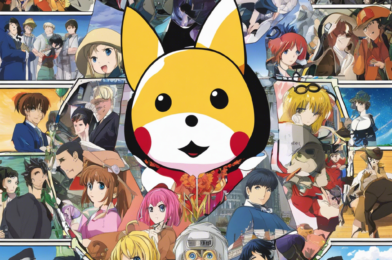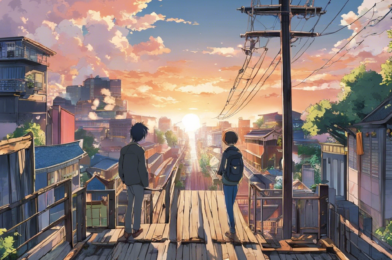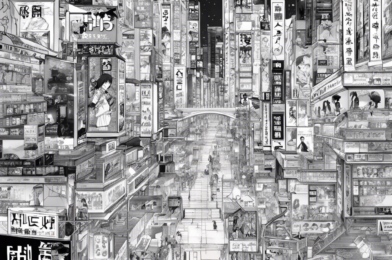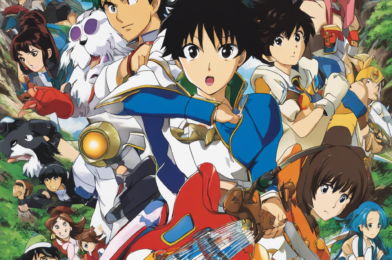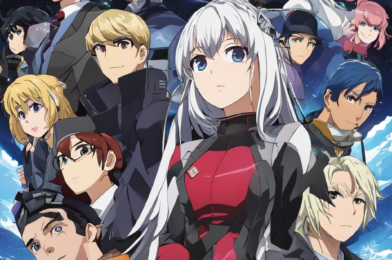As an avid manga reader and anime enthusiast, I’ve spent countless hours immersed in the captivating worlds of these two art forms. While manga and anime share a deep connection, their transition from one medium to the other is often a delicate dance, with some adaptations soaring to new heights while others falter. In this article, I’ll delve into the realm of anime adaptations, exploring which manga series have made the most seamless and compelling transitions to the small screen.
The journey begins with understanding the inherent differences between manga and anime. Manga, with its static panels and intricate artwork, allows readers to linger on each frame, savoring the details and letting their imaginations fill in the gaps. Anime, on the other hand, breathes life into these static images, adding movement, sound, and a unique visual flair. A successful adaptation must strike a balance, capturing the essence of the source material while embracing the strengths of the animated medium.
1. Fullmetal Alchemist: Brotherhood
As someone who has followed the Fullmetal Alchemist saga from its inception, I can attest to the sheer brilliance of the Brotherhood adaptation. This series not only stayed faithful to the original manga but also elevated the narrative with its stunning visuals and impeccable pacing. From the complex alchemy system to the rich character development, every element was meticulously translated, creating a captivating experience that resonated with fans and newcomers alike.
2. Attack on Titan
The Attack on Titan manga took the world by storm with its gritty, post-apocalyptic world and the relentless battles against towering, man-eating Titans. The anime adaptation, with its breathtaking animation and haunting soundtrack, amplified the intensity and horror of this dark fantasy. I vividly remember the chills that ran down my spine as the Colossal Titan breached the walls, setting the stage for an epic journey that kept me on the edge of my seat.
3. One Punch Man
In a sea of serious and brooding anime, One Punch Man stood out as a refreshing parody of the superhero genre. The manga’s quirky humor and over-the-top action sequences were brilliantly brought to life in the anime, thanks to its stellar animation and impeccable comedic timing. As a fan of both manga and anime, I found myself laughing out loud at Saitama’s nonchalant antics and the ridiculous battles that ensued.
4. Demon Slayer: Kimetsu no Yaiba
Demon Slayer’s anime adaptation is a testament to the power of stunning visuals and fluid animation. From the breathtaking fight sequences to the intricate character designs, every frame was a work of art. As someone who appreciates the technical aspects of anime, I was in awe of the attention to detail and the seamless integration of CGI elements, making the battles feel truly epic and immersive.
5. Jujutsu Kaisen
Jujutsu Kaisen’s manga captured my attention with its unique blend of horror, action, and character-driven storytelling. The anime adaptation not only preserved these elements but also elevated them with its dynamic animation and stunning fight choreography. I found myself holding my breath during the intense battles, marveling at the fluidity of the movements and the raw power on display.
6. Death Note
Death Note’s psychological thriller premise and mind games between Light Yagami and L made for a gripping manga experience. The anime adaptation, with its haunting soundtrack and meticulous attention to detail, amplified the suspense and tension. As someone who appreciates intelligent storytelling, I was captivated by the anime’s ability to delve into the complex moral dilemmas and the psychological warfare between the two brilliant minds.
7. Haikyu!!
Sports anime often struggle to capture the energy and intensity of their source material, but Haikyu!! defied those odds. The anime adaptation brought the high-stakes volleyball matches to life with its dynamic camera work and seamless animation. As a fan of the manga, I was impressed by how the anime conveyed the characters’ passion, teamwork, and the sheer thrill of the game, leaving me on the edge of my seat during every rally.
8. Vinland Saga
Vinland Saga’s manga is a masterclass in historical storytelling, blending Viking culture with complex character arcs and themes of violence and redemption. The anime adaptation not only captured the gritty realism of the era but also added depth to the characters through its exceptional voice acting and nuanced animation. As someone who appreciates historical fiction, I was captivated by the anime’s ability to transport me to a bygone era while exploring profound themes of humanity.
These are just a few examples of manga series that have made a seamless and captivating transition to the world of anime. Whether it’s the faithful adaptations that honor the source material or the bold reimaginings that breathe new life into familiar stories, the art of anime adaptation continues to captivate audiences worldwide. So, fellow manga and anime enthusiasts, I encourage you to explore these adaptations and discover the magic that unfolds when these two mediums converge.


